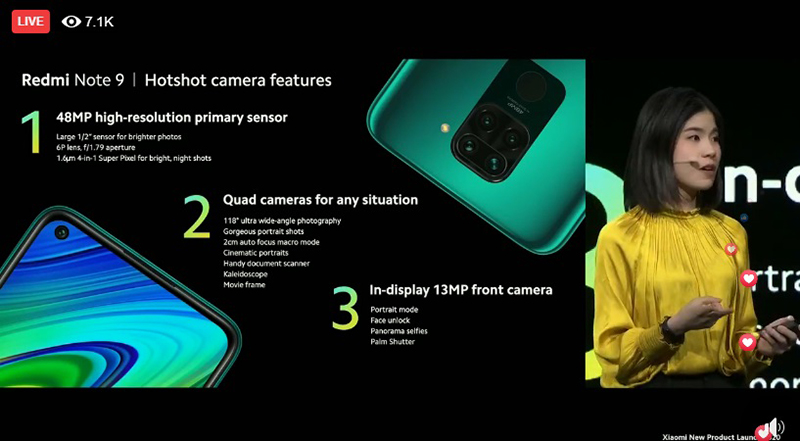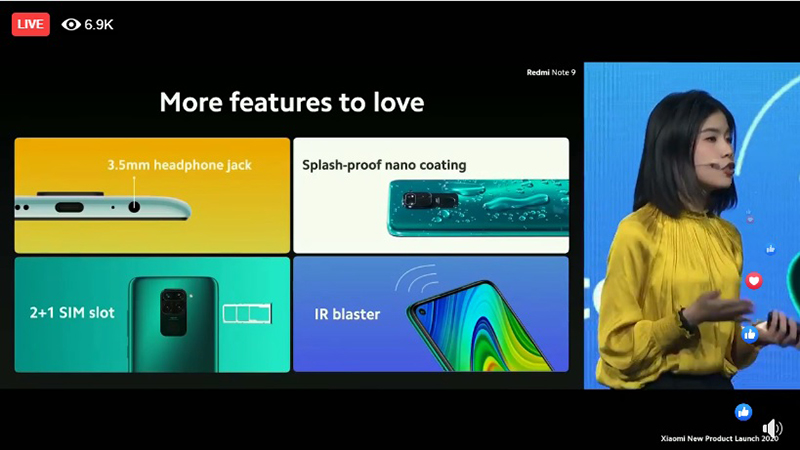Xiaomi Redmi Note 9 and Redmi Note 9 Pro comes to Singapore

Joining the Xiaomi Redmi Note 9S are two new Redmi Note 9 phones announced by the Chinese phone maker on the evening of 30 April 2020.
The three devices - Redmi Note 9S, Redmi Note 9 Pro, and Redmi Note 9 is the complete lineup of entry-level Xiaomi devices that the company is famous for since its inception.

Xiaomi wants the Redmi Note 9 Pro to offer a flagship feel without its users having to break the piggybank.
It packs a small handful of flagship-tier features, giving the phone its characteristic value-for-money that's inherent to the Redmi series of Xiaomi phones.

The Redmi Note 9 Pro is an Android 10 smartphone that uses a 6.67-inch, 2.5D curved LCD display at 2,400 x 1,080 pixels resolution (~395ppi).
The processing is handled by a Qualcomm Snapdragon 720G chipset, which is the same processor found in the Redmi Note 9S that was announced last month.
As of writing, the only other available smartphone with an identical mid-range Qualcomm chipset is the Realme 6 Pro.

As part of the Redmi series, the Redmi 9 Pro also offers a bunch of mainstay features such as its IR blaster, 3.5mm headphone jack, and its splash-proof nano-coating.
What's exciting is the generous 5,020mAh battery capacity which also supports 30W fast charging. Xiaomi will include a 33W charging adapter in the box as well.
The Redmi Note 9 Pro has a multifunctional NFC component, while the Redmi Note 9S doesn't - so if cashless payments are important to you, it's the Redmi Note 9 Pro you're looking for.

A vital aspect of the Redmi Note 9 Pro is the AI Quad Camera system, which is almost identical to the Redmi Note 9S's camera specs.
In a nutshell:

The Redmi Note 9 Pro allows photo-shooting in RAW. Pro Video mode offers greater control when recording videos, such as focal point and exposure settings.
Six different kaleidoscope options are available for creative video shooting, alongside editing features to make it more fun for the user.
Beyond that, the differences from the Redmi Note 9S are subtle, such as the side-mounted fingerprint sensor available on the Redmi Note 9 Pro compared against the in-display fingerprint sensor on the Redmi Note 9S.

Globally, the Xiaomi Redmi Note 9 Pro will start retailing around mid-May 2020, with more details available closer to the launch date:
It will be available in Green, Glacial White, and Interstellar Grey colourisations.

Xiaomi's Redmi Note 9, on the other hand, is vastly different from its approach in packing the very essentials of a smartphone at a very low price tag.
The Redmi Note 9 has a 6.53-inch LCD display at FHD+ resolution (2,340 x 1,080 pixels resolution).
Under the hood is a MediaTek Helio G85 chipset, which is from MediaTek's gaming-oriented line of mobile processors. Xiaomi claimed that it's 21 per cent better-performing than the processor in the Xiaomi Redmi Note 8 on the live-streamed keynote.

It features a Quad Camera system similar to the Redmi Note 9S and Redmi Note 9 Pro, but with slightly different specs:

Besides the display size, the choice of processors, and the slightly altered camera specs, the Redmi Note 9 packs very similar components and features. It still has a 3.5mm headphone jack, an IR blaster, splash-proof nano-coating, and a 2+1 SIM slot.
The device also has a 5,020mAh battery capacity, but it supports up to 18W fast-charging instead. The provided charging adapter in the Redmi Note 9's box is a 22.5W fast-charger, so all is good on that front as well.
A built-in feature for the Redmi Note 9 is the Document Scanner. It's marketed as a better-than-usual scanner made possible with the cameras on the Redmi Note 9 because it erases shadows and it helps to align your text correctly before saving.

Globally, the Redmi Note 9 will be available in mid-May 2020 like the Redmi Note 9 Pro, with more local availability and pricing details surfacing closer to the launch date:
It will be available in Forest Green, Polar White, and Midnight Grey colourways.
11 May 2020 update: Xiaomi said that the Redmi Note 9 and the Redmi Note 9 Pro will be available in Singapore starting from 18 May 2020, with the following models at the following official retail prices:
All three phones are available for pre-orders starting now until 17 May 2020 at Xiaomi's official flagship store on Lazada (note: our checks show that it's not live yet).
Folks who pre-order any Redmi Note 9 Pro on the Lazada flagship store can receive a complimentary Mi Fan Festival Bundle Set, while pre-orders of the Redmi Note 9 comes with a Mi Fan Festival Xiaomi Doll.
For reference, the Redmi Note 9S starts at $299 and was available since 1 April 2020.
This article was first published in Hardware Zone.